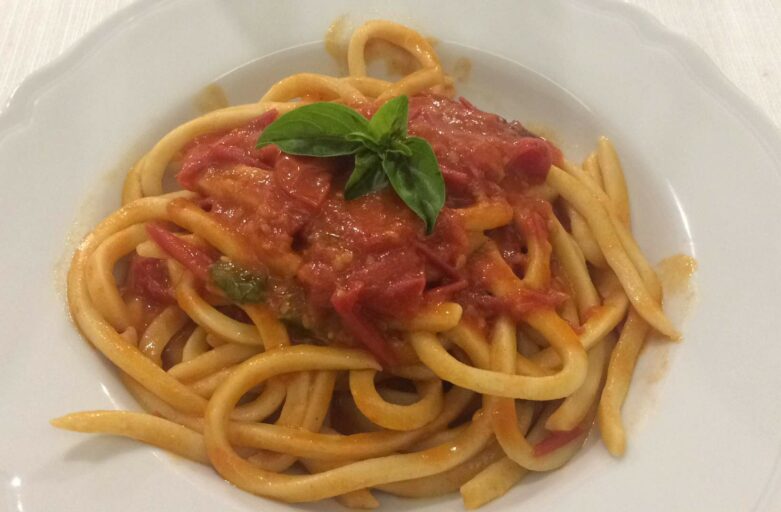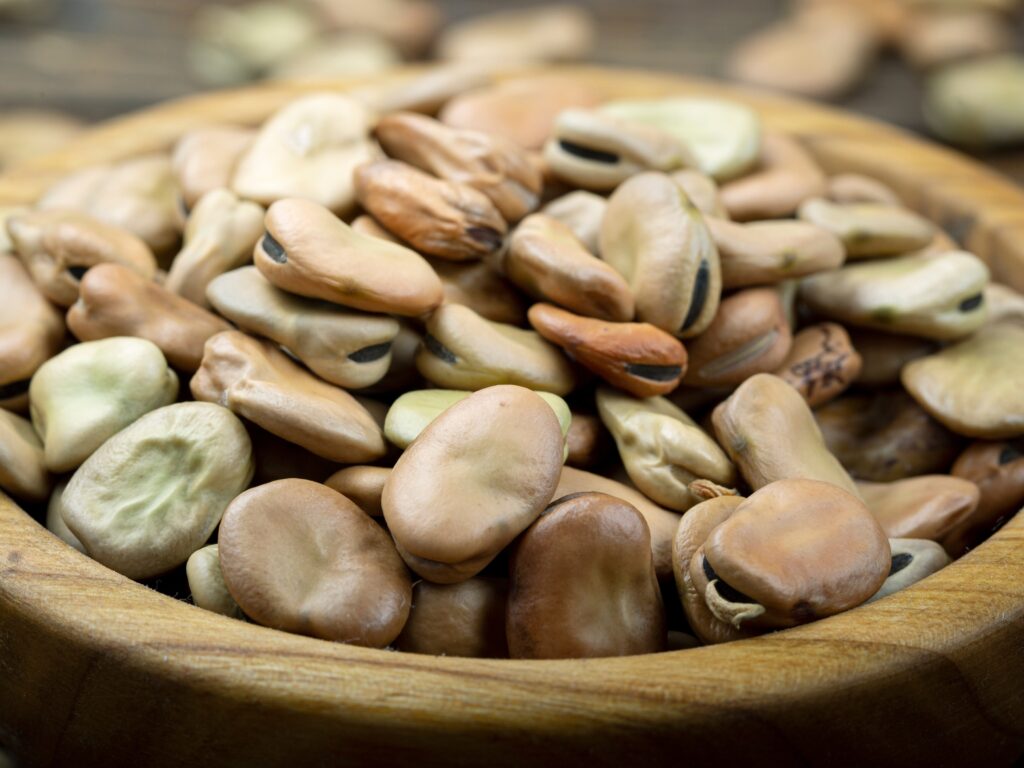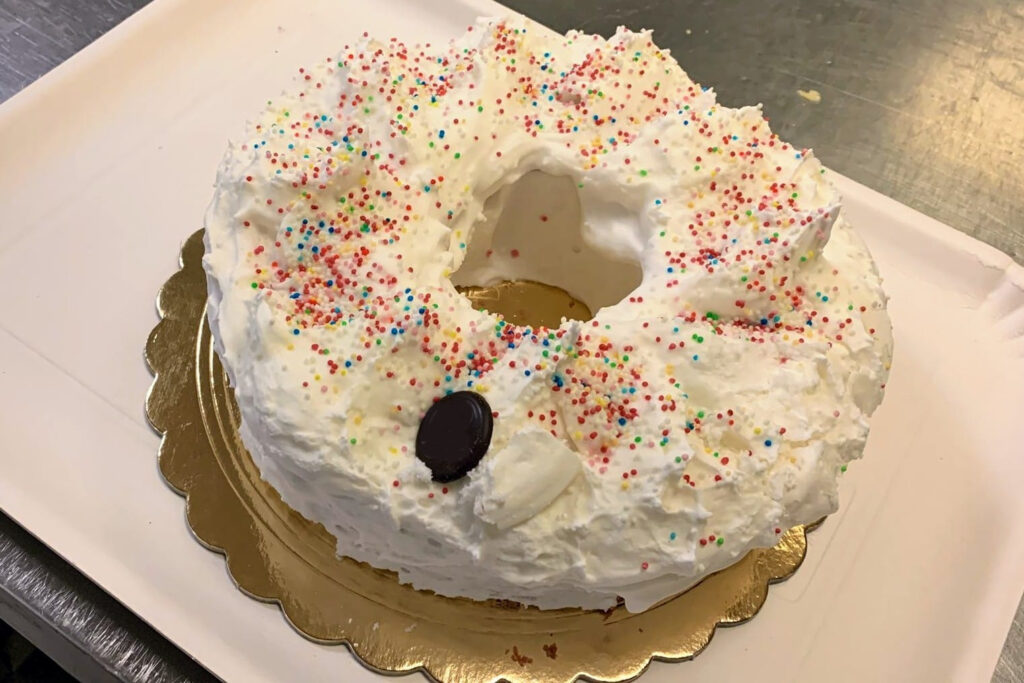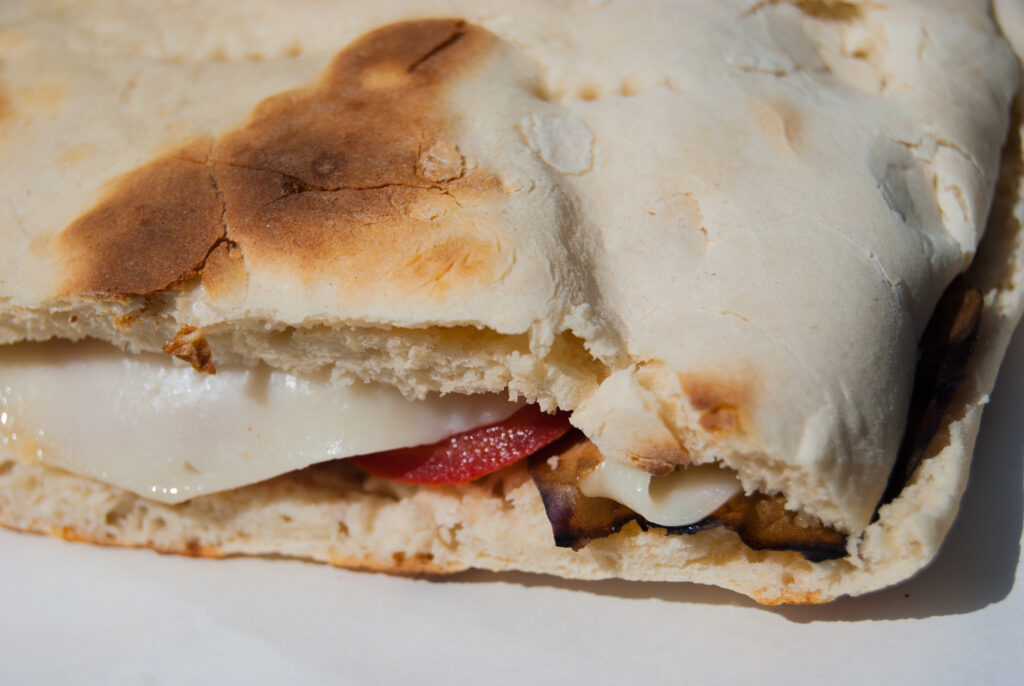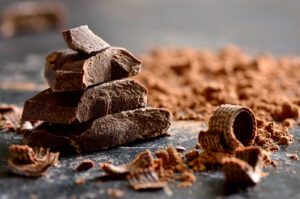In Italy, first courses represent a necessary step of every meal, whether eaten at home or at a restaurant. In Umbria, there is a specific type of pasta with ancient origins that includes the name and the history of this region in its own name: umbricelli. Today, this fresh pasta is recognized by the Ministry of Agricultural, Food and Forestry Policies a Prodotto Agroalimentare Tradizionale (PAT) (Traditional Agricultural Product).
Umbricelli is a type of pasta popular in the whole region, but according to ancient sources, Spoleto and Foligno are the original production cities. Despite being poor food related to the rural tradition, it is tasty and easy to make; only a few ingredients are necessary: water, flour (semolina and double zero flours) and a bit of olive oil. After having kneaded and left rest the dough, it is possible to give the typical shape to umbricelli: long, rolled and thick. It is a type of Umbrian pasta made without eggs, and due to its ingredients, it is comparable to Tuscan pici, Ligurian trofie and scialatielli of the Amalfi Coast.
Umbricelli is also called strangozzi for its long shape, recalling the leather laces used in the past to tie shoes. There is a historical reason why this name is associated with this pasta: the Umbria Region, seat of the Papal State for many years, had been the land of attempted murders against the clergy by revolutionaries who used shoelaces to strangle priests. Umbricelli, if called strangozzi, must not be confused with strozzapreti (“priest-strangler”), another pasta typical of the Emilia-Romagna Region, whose name recalls not attempted murders but clergy feasts.
This pasta can be seasoned with different sauces, but it is hard to choose the best combinations. Among many recipes, the traditional ones describe umbricelli sauteed with tomato sauce, fresh garlic and fresh parsley sprinkled on the top. Or with another typical product of this region: truffle.
Vivi l’Umbria insieme ai suoi protagonisti
Percorsi ed esperienze da scoprire per un’immersione nella cultura, nella natura e nei sapori umbri
